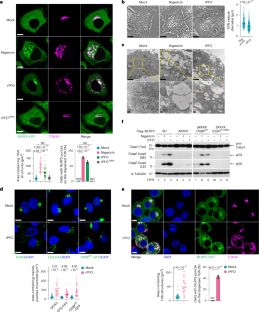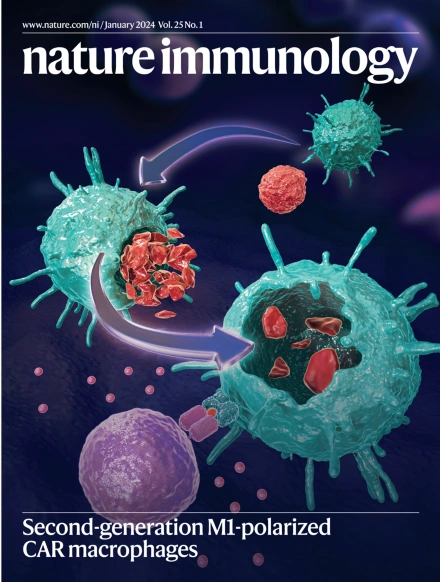Type A cholesterol-dependent cytolysins translocate to the trans-Golgi network for NLRP3 inflammasome activation
IF 27.6
1区 医学
Q1 IMMUNOLOGY
引用次数: 0
Abstract
Cholesterol-dependent cytolysins (CDCs) constitute the largest group of pore-forming toxins and serve as critical virulence factors for diverse pathogenic bacteria. Several CDCs are known to activate the NLRP3 inflammasome, although the mechanisms are unclear. Here we discovered that multiple CDCs, which we referred to as type A CDCs, were internalized and translocated to the trans-Golgi network (TGN) to remodel it into a platform for NLRP3 activation through a unique peeling membrane mechanism. Potassium efflux was dispensable for CDC-mediated TGN remodeling and NLRP3 recruitment, but was required for the recruitment of the downstream adaptor ASC. In contrast, desulfolysin, which we referred to as type B CDC, was not internalized or translocated to the TGN due to its distinct C-terminal domain 4, despite potent pore formation on the plasma membrane, and hence could not activate NLRP3. Our discoveries uncovered the ability of CDCs to directly remodel an intracellular organelle for inflammatory response. Chen and colleagues show that type A cholesterol-dependent cytolysins, a group of bacteria pore-forming toxins, translocate to the trans-Golgi network to remodel it into a platform for NLRP3 activation.


A型胆固醇依赖性细胞溶解素转运到反式高尔基网络,导致NLRP3炎性体激活
胆固醇依赖性细胞溶素(cdc)是最大的一组成孔毒素,是多种致病菌的关键毒力因子。已知几种cdc可激活NLRP3炎性体,但其机制尚不清楚。在这里,我们发现多个cdc,我们称之为A型cdc,被内化并转移到反式高尔基网络(TGN),通过独特的剥离膜机制将其重塑为NLRP3激活的平台。对于cdc介导的TGN重塑和NLRP3募集,钾外排是必不可少的,但对于下游适配器ASC的募集却是必需的。相比之下,我们称之为B型CDC的脱硫素,由于其独特的c端结构域4而没有内化或易位到TGN,尽管质膜上形成了强有力的孔,因此不能激活NLRP3。我们的发现揭示了cdc直接重塑炎症反应的细胞内细胞器的能力。
本文章由计算机程序翻译,如有差异,请以英文原文为准。
求助全文
约1分钟内获得全文
求助全文
来源期刊

Nature Immunology
医学-免疫学
CiteScore
40.00
自引率
2.30%
发文量
248
审稿时长
4-8 weeks
期刊介绍:
Nature Immunology is a monthly journal that publishes the highest quality research in all areas of immunology. The editorial decisions are made by a team of full-time professional editors. The journal prioritizes work that provides translational and/or fundamental insight into the workings of the immune system. It covers a wide range of topics including innate immunity and inflammation, development, immune receptors, signaling and apoptosis, antigen presentation, gene regulation and recombination, cellular and systemic immunity, vaccines, immune tolerance, autoimmunity, tumor immunology, and microbial immunopathology. In addition to publishing significant original research, Nature Immunology also includes comments, News and Views, research highlights, matters arising from readers, and reviews of the literature. The journal serves as a major conduit of top-quality information for the immunology community.
 求助内容:
求助内容: 应助结果提醒方式:
应助结果提醒方式:


